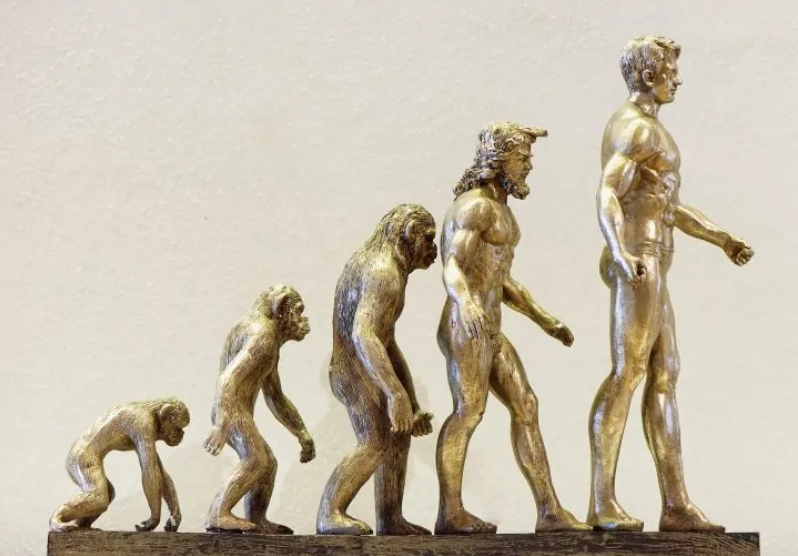Evolution Of Life Facts

Reading through your old Facebook posts probably sounds like your worst nightmare. However, why don’t we turn it up a notch? Let’s go for the ultimate throwback to billions of years ago: the evolution of life as we know it.
Humans are still evolving – and the proof is in your hands.
Adaptability is one of nature’s greatest wonders. For humans, living in certain conditions causes genetic mutations over time to help them survive. For example, the people of Tibet have a higher resistance to altitude sickness. A tourist could die in the alps if they don’t acclimate properly – but for locals, it’s just their everyday life.
Inborn traits are also proof of evolution. Some people have an extra bone behind the knee called the fabella. Others are born without an appendix. However, if you want visible proof, you can take a look at your wrist. Holding your arm out, touch your thumb to your pinky. If you see a raised line in the middle of your wrist, you’re part of the 85% who still have this extra tendon. According to scientists, the tendon is a leftover trait from when prehistoric people had to grip and throw spears. However, with the evolution of life, people didn’t need to hunt for food anymore. This explains the 15% that are not born with the tendon.
Lip twitching is another proof of evolution.
When we’re angry, we tend to bare our teeth or snarl. This behavior is also seen in predators such as big cats and wolves.
Only 15% of the population can wiggle their ears.
If you were ever a bored kid, you may have noticed how you can move or wiggle your ears. You may have even excitedly shown your parents or friends. However, not everyone can do that. In fact, 85% of people can’t move their ears. According to scientists, the ability to move the Auricularis muscles in the outer ear is an evolutionary trait that helped ancestors pinpoint sounds. When people started living in groups, it eliminated the need for heightened hearing. As such, this genetic trait was eliminated from certain lineages. Who knew that weird abilities like whistling or forming a clover tongue are evidence of the evolution of life?
Human evolution started with fire.
Turns out, the discovery of fire didn’t just lead to technology. According to research, the evolution of life for humans began when they discovered how to cook with fire. Consuming cooked food was easier on humans’ teeth and gut. I mean, sashimi is fine, but imagine chomping down raw meat from the bone? Since people started cooking their meals with fire, humans evolved to have smaller teeth and digestive systems over time.
Hiccups came from fish and amphibians.
The reflex that pushes water over fish gills and makes amphibians gulp air was copied unsuccessfully by humans, according to science. Instead of giving us the ability to breathe underwater, the reflex can make the diaphragm spasm – which is what we know as hiccups.
The platypus was the first mammal that evolved from reptiles.
If you take a look at a platypus, you’d think it was created by a Sims randomizer. Not only are they weirdly cute, but platypus are unique even in genetics. Platypuses are the only animal that lays eggs yet still produces milk. It also produces venom unique from reptiles, as well as electrolocation.
Charles Darwin did not form the theory of evolution at the Galapagos Islands.
Charles Darwin came up with the theory of evolution after a 5-week stay in the Galapagos Islands. However, contrary to popular belief, he didn’t form the theory during his time there. Rather, he just kept observing local wildlife between the different islands in the archipelago. Later, he states in chapter two of On The Origin of Species that his visit to the Galapagos inspired his theory. Additionally, he never called it the theory of evolution. Instead, Darwin referred to his theory as the theory of “descent with modification.”
Humans are one of the few species that survive after reproduction.
While we’re not exactly tortoises that can live for hundreds of years, humans got pretty lucky when it comes to our life span. Flies only live for a day, and male bees literally explode and die once they have sex. For other members of the animal kingdom, they’ll constantly go into heat cycles and reproduce until they die. However, humans are one of the few species that can survive long after menopause or infertility.
Evolution has its disadvantages, too.
Before hominids could walk properly, the human pelvis evolved to allow the Homo erectus onwards to walk upright. However, the evolved pelvic structure increased humans’ risks in bearing children. Another double-edged trait is the lumbar curve in the lower back that helps with our balance. Because of the dipped structure, it makes us more vulnerable to pain and spinal injury compared to other animals.
People lift their feet or climb when afraid because of an ancient instinct.
Nothing triggers our fight-or-flight response like creepy crawlies. When we lift our feet to avoid the roach on the floor, we seem to forget that they can still fly to us. Surprisingly, our instinct to prop our feet up on the chair or couch can be traced back to prehistoric times. According to research, people feel the urge to take an elevated position when scared or anxious because of a prehistoric fight-or-flight response. Similar to how early mammals would climb trees to evade predators or threats, we scamper up when we see a pest on the floor.






